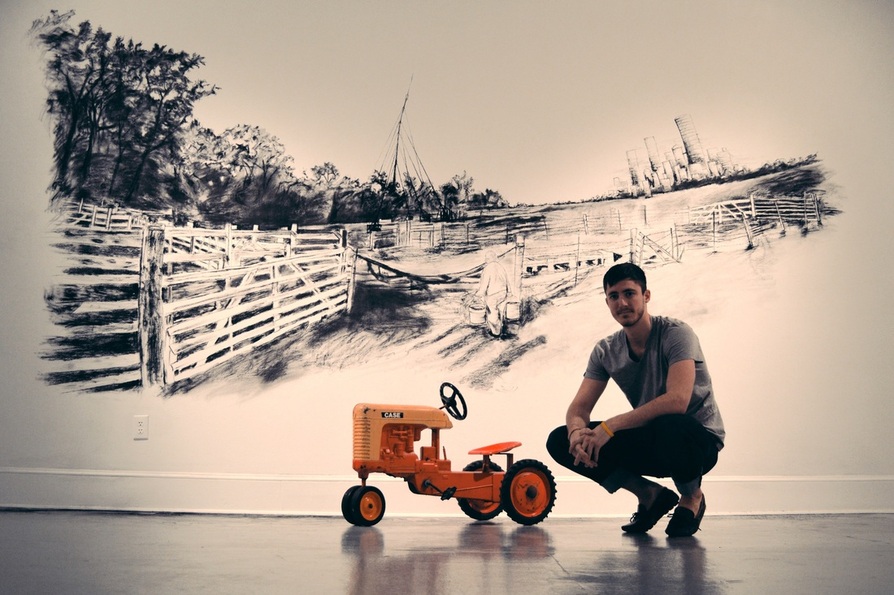Artist Statement:
I really want to explore my childhood memories of Byron, Georgia, and how those memories associate with my current lifestyle in the city, which is very different from what I have observed through my grandparents; Wilbur and Miriam Griffin. Subsistence farming is not a routine, daily operation that I have in my current life, however I appreciate what I’ve learned through my grandparents and see all of their procedures as marks made to take control of the land. This exhibition is an exploration of my memories and how the subjects and procedures I can remember of farming in Byron contrast with the urban landscape of my life.
Rural farming feels very isolated from the city and very different from the dependent culture that exists in business and metropolitan environments. I see the subjects cultivated on the farm as instruments of passion for the land and also the value of having land to maintain. I understood ideas about farming in certain ways growing up. These range from toy tractors to frequent visits to Byron that gave me tastes of exhilaration for a simple and less chaotic environment. The actions on the land were of the choosing of my grandparents and reflected a peace about choosing the kind of environment one likes or wants to be in. I want to integrate the components of farming that I grew up understanding into the city environment.
I feel that the city landscape is also a pressure on farmland, where maintenance is low and idle by relative comparison. Very recently, in the span of the farm’s history, a cell tower was built on a portion of my grandparents’ farm. I observe this as an obvious increase of the city environment in the agrarian landscape through the rapid adaptation of culture that is weighted against tradition and utility. I wish to express the relationship that exists between the rural and city landscapes, and borrow from my memories of farming in Byron to do so.
I really want to explore my childhood memories of Byron, Georgia, and how those memories associate with my current lifestyle in the city, which is very different from what I have observed through my grandparents; Wilbur and Miriam Griffin. Subsistence farming is not a routine, daily operation that I have in my current life, however I appreciate what I’ve learned through my grandparents and see all of their procedures as marks made to take control of the land. This exhibition is an exploration of my memories and how the subjects and procedures I can remember of farming in Byron contrast with the urban landscape of my life.
Rural farming feels very isolated from the city and very different from the dependent culture that exists in business and metropolitan environments. I see the subjects cultivated on the farm as instruments of passion for the land and also the value of having land to maintain. I understood ideas about farming in certain ways growing up. These range from toy tractors to frequent visits to Byron that gave me tastes of exhilaration for a simple and less chaotic environment. The actions on the land were of the choosing of my grandparents and reflected a peace about choosing the kind of environment one likes or wants to be in. I want to integrate the components of farming that I grew up understanding into the city environment.
I feel that the city landscape is also a pressure on farmland, where maintenance is low and idle by relative comparison. Very recently, in the span of the farm’s history, a cell tower was built on a portion of my grandparents’ farm. I observe this as an obvious increase of the city environment in the agrarian landscape through the rapid adaptation of culture that is weighted against tradition and utility. I wish to express the relationship that exists between the rural and city landscapes, and borrow from my memories of farming in Byron to do so.



